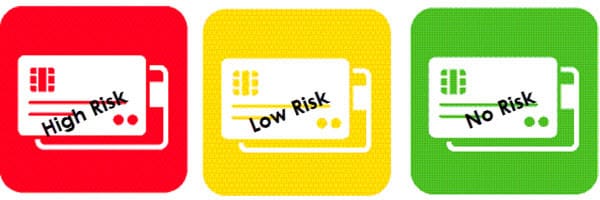EMV is coming! But what does that mean for you, specifically if you’re a service-based business? There’s a lot of information out there and it can be confusing to assess the impact this change to EMV chip cards may—or may not—have on your service-based business. So let’s start with some of the basics.

What is EMV?
EMV—Europay, MasterCard, Visa—is a global standard for credit and debit cards equipped with an embedded microchip. Standard U.S. credit and debit cards have a magnetic stripe that is swiped to process a transaction. Even though chipped cards are being widely distributed, they will continue to have the magnetic stripe on them. Meaning, nothing related to the EMV rollout will stop your current POS devices and software from working.
Why is EMV being introduced?
Ultimately, the goal of chip cards is to help reduce fraud.
- Chip cards are much more difficult to duplicate than traditional credit and debit cards.
- Chip cards can also block data breaches that can occur from a skimmer on card readers or malware on the computer used to process USB swipe transactions.
- The US currently has the most card fraud in the world–nearly 24% of all credit card sales, yet more than 47% of the fraud worldwide.
How will it work?
The embedded microchip stores encrypted cardholder data and transmits a unique one-time use code (not the cardholder data itself) to authorize a transaction. This is in contrast to the magnetic stripe which contains static unencrypted cardholder data that can be intercepted during transmission and used to create counterfeit cards and transactions.
Does this affect you?
For service-based merchants, there are several reasons EMV is very unlikely to have an impact on your business:

To help you understand if the EMV change impacts your business, see our one-page guide.
Takeaway: In-store counterfeit fraud is less likely for merchants who primarily sell services and only some products over the counter. Most fraudulent cards are used to purchase high-ticket items that can be easily resold and converted to cash.
When is this happening?
Banks have already begun issuing chip cards. Beginning in Oct. 1, 2015, in-store counterfeit fraud liability will shift to either the financial institution or the merchant—whichever party has not adopted chip technology. However, as of Aug. 6, 2015, a recent poll finds that only about one in 10 Americans have received their new chip card(s) and of those who have, only one-third say they’ve used the cards in the new card readers.
What is PaySimple doing?
PaySimple is working on an EMV solution and will communicate updates directly to our customers as well as post information to our website. You may also find our earlier blog post, preparing your small business for EMV, to be a helpful resource.
If a merchant wants to accept EMV chip cards, what do they need to do?
There is a different chip card reader that is used to read a credit or debit card with chip technology. Again, the chipped cards that are being distributed will continue to have the magnetic stripe on them so you may still process cards with your current POS devices and software. PaySimple is working on a solution and will notify you as details are available.
Sign up for Small Business Smarts to get the latest updates on EMV and more, delivered directly to you.